Solutions
The Huro Extract platform allows for the extraction and integration of disparate data sources into a single schema. This can include both structured and unstructured data. The platform is built on Microsoft Azure and includes many of they data management technologies including Azure Blob Storage, Azure Data Lake, Data Bricks, Data Factory, Azure Cognitive Search and Azure SQL.
Integration Platform as a Service (iPaaS)
iPaaS offers our clients the ability to extract data from large numbers of disparate data sources and integrate this information into a centralised repository. This can be done at scale and at pace. We are fully conversant in resolving any questions around connectivity / access and data security.
This approach is business vertical agnostic and can be used to benefit any business function where much needed data is not readily available.
The iPaaS solution is often used for projects such as supply chain analytics, customer analytics, warehouse management and profitability analysis.
iPaaS for Business to Consumer
The design of iPaaS incorporates the ability to confidentially receive, analyse and report customer based streaming data from a variety of sources including wearable devices and social media applications.
Applications in development in the Healthcare sector include dynamic cardio analysis using wearable ECG, heart rate and blood pressure data. This streaming data is analysed through our AI engine which will map correlations between received data and validated data sets providing the consumer with a higher level of insights in a timely manner.
‘Huro Extract’ Application
Our integration platform offers our clients the ability to connect to multiple data sources. We have specialised in SAP, Oracle and Dynamics over the years, however over 30+ systems are catered for.
In this SAP example, we have broken down the process of data management hierarchically with Client and/or Partner being at the top of this tree. Each Client has a suite of Projects which must include a single connection. From this connection Jobs are defined to target and extract the relevant data for analysis. These jobs are scheduled to run at specified intervals and loaded into Microsoft Azure for storage and management.
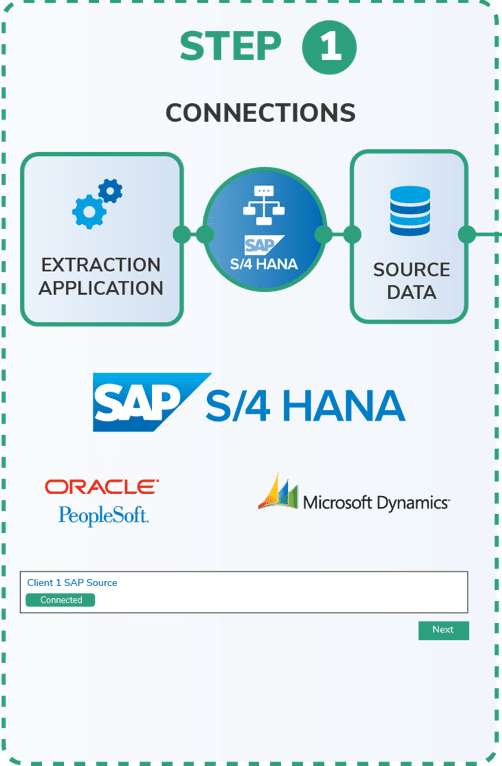
Step 1 - Connections
The connections can be generated either independently or when generating a Project. Each Project must be associated with a connection before Jobs can be created. The connection will incorporate the client’s data access information and most importantly the designated client user account. This account must be restricted so as to only access the relevant data for the business objective. This will enhance the security of the extraction.
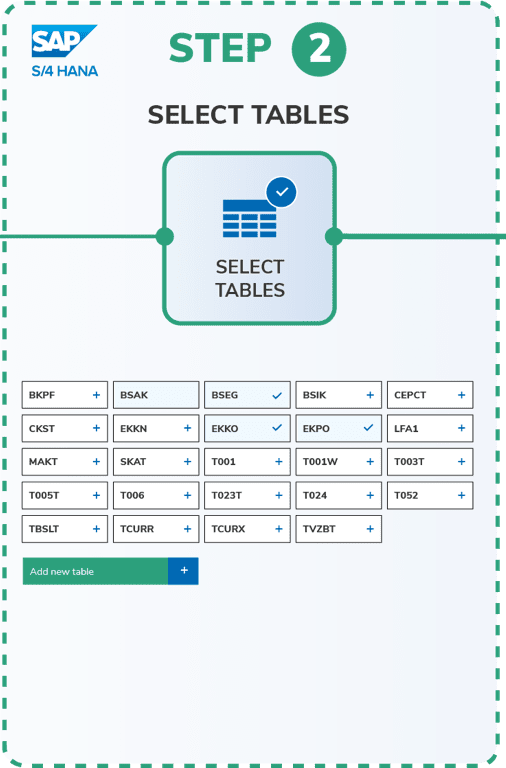
Step 2 - Select tables
The required transactional data will be stored in records within tables. At this stage we need to select the relevant tables that contain the data elements required to complete the business objective.
Where tables are not present on the available list, these can be added. Only tables that are selected can have their records extracted.
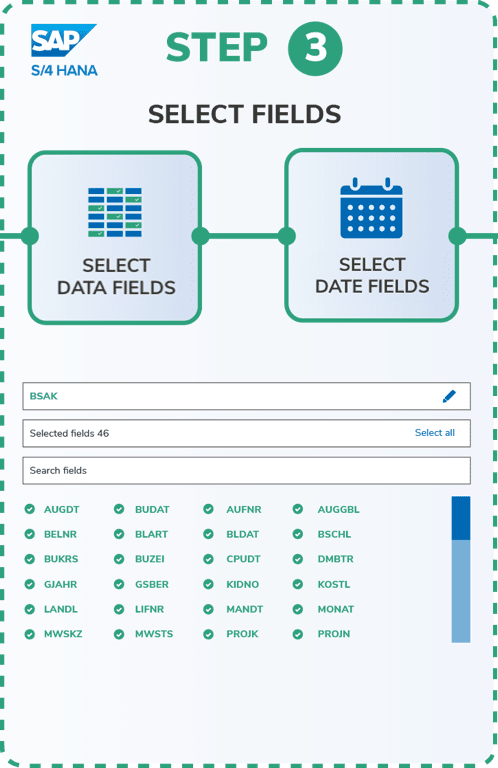
Step 3 - Field Selection
The user can select the table and view the available fields. Selected fields will appear in alphabetical order and be coloured green. The user must also, when required, select those fields that will be used for date range selection.
At this point the user has selected both all relevant tables and fields necessary for the analysis of the data.
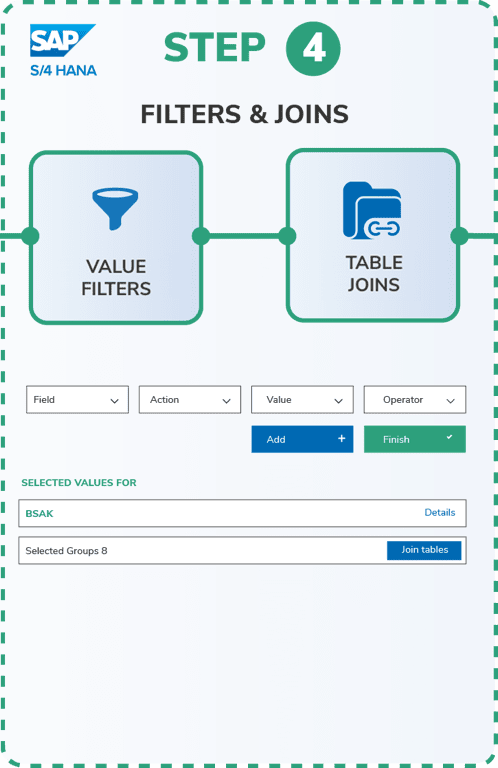
Step 4 - Filters & joins
Certain fields are used to limit the data extraction. Values are selected within these fields that ensure that only pertinent data is extracted in the process.
In order to ensure no ‘orphan’ data is extracted, i.e. data without complete lineage, joins are created between tables.
These steps ensure that only the necessary data is extracted from the data sources.
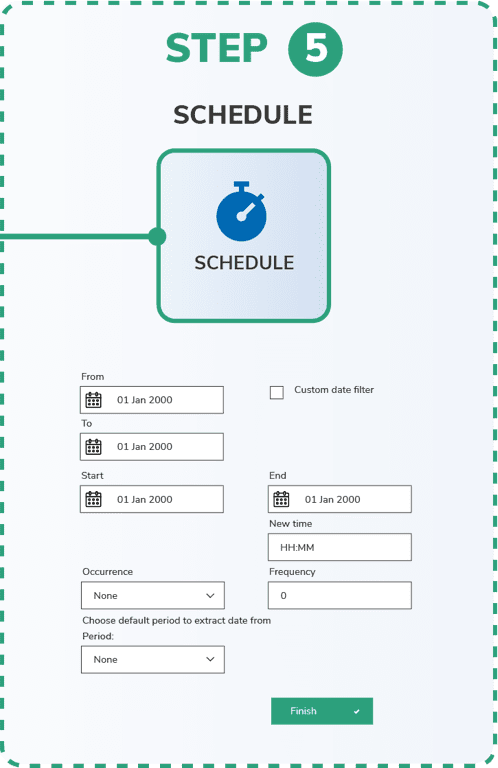
Step 5 - Scheduler
The scheduler is a complex interface as it must cater for a multitude of scenarios. These may include varying frequencies as well as varying date ranges based on the moment of extraction.
There is also a custom schedule option where a user may wish to create a ‘one-off’ extraction for a specific date range, outside the standard options.
Book a Demo
With over 20 years of data extraction, data integration and data analysis experience, we look forward to solving your data challenges.
Data Integration

Contact us
To find out more about our services please fill out the form below and we will be in touch.
Book a Demo
To book a demonstration please fill out the form below and we will be in touch.